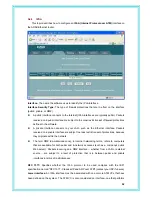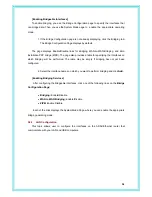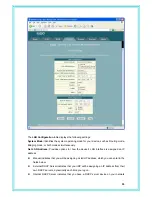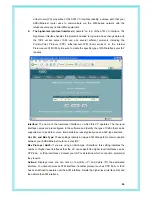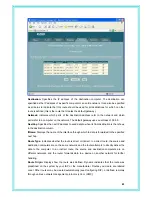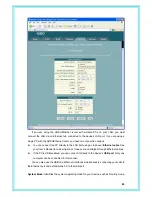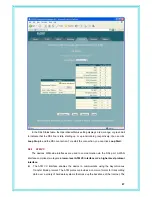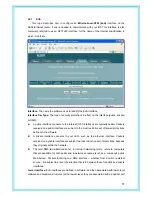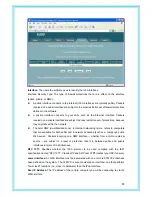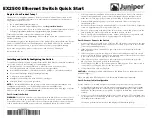
62
that are available for both public and in-network accesses (such as a company's public
Web server). Packets incoming on a DMZ interface -- whether from a LAN or external
source -- are subject to a level of protection that is in between those for public and private
interfaces.
Lower interface:
EoA interfaces are defined in software, and then associated with lower-level
software and hardware structures (at the lowest level, they are associated with a physical port
- the WAN port). This field should reflect an interface name defined in the next lower level of
software over which the EoA interface will operate. This will be an ATM VC interface, such as
aal5-0.
Config IP Address and Net Mask:
The IP address and network mask you want to assign to
the interface. If the interface will be used for bridging with your ISP and you will not be using
the device as a router on your LAN, then you do not need to specify IP information. If you
enable DHCP for this interface, then the Configured IP address will serve only as a request to
the DHCP server. The actual address that is assigned by the ISP may differ if this address is
not available.
Use DHCP:
When enabled, this setting instructs the device to accept IP information assigned
dynamically by your ISP's DHCP server. If the interface will be used for bridging with your ISP
and you will not be routing data through it, leave this checkbox unselected.
Default Route:
Indicates whether the ADSL/Ethernet router should use the IP address
assigned to this interface, if any, as its default route for your LAN. This can be Enable or
Disable.
Gateway Address:
The external IP address that the ADSL/Ethernet router communicates with
via the EoA interface to gain access to the Internet. This is typically an ISP server.
5.6 Routing
5.6.1 IP
Route
IP routes
can be created on the ADSL/Ethernet router to specify where it should send
data received on a particular interface. Routes specify the IP address of the next device
interface or Internet destination to forward data to, given the ultimate destination of the data.
A common type of route is a
default gateway
, which defines the IP address where all data
is forwarded unless an IP route has been defined for the particular destination in question.
Each time data is passed towards its destination from one Internet address to another, it is said
to complete one
hop.





